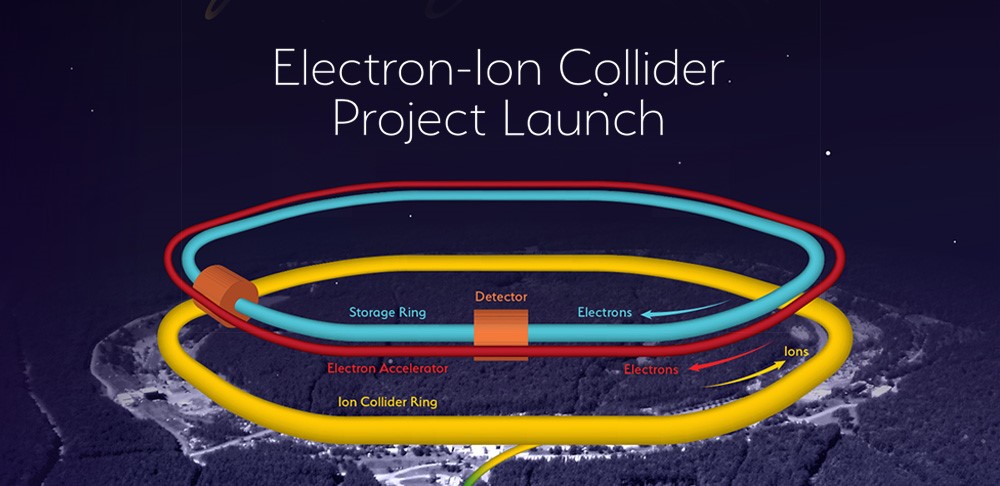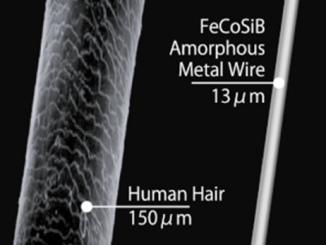
Proton spin, an intrinsic angular momentum somewhat analogous to the spin of a toy top, is a key enabler for magnetic resonance imaging, but scientists still don’t know how this property arises from the inner building blocks of protons. When it comes onstream a decade from now, leading physicists around the world are expected to begin using the Electron-Ion Collider, a highly engineered loop 2.4 miles in circumference, to crack the mystery and open doors for technology advancement in national security, medicine and other fields.
A decade from now, leading physicists around the world hope to take a crack at new explorations into fundamental matter at the Electron-Ion Collider project at Brookhaven National Laboratory on New York’s Long Island. By then the collider is expected to be operating as a giant, high precision sub-atomic microscope 2.4 miles in circumference.
Collisions at the EIC will reveal how quarks and gluons interact to form larger building blocks via the strong nuclear force. A deeper understanding of the strong force, which is 100 times more powerful than the electromagnetic force that governs today’s electronic technologies, may lead to insights and discoveries that power the technologies of tomorrow. Gluons are the subatomic particles that that bind quarks into the more familiar particles that make up matter in today’s world.
The journey into this new frontier in nuclear physics is planned to give physicists the tool they need to fully explore the origin of neutron spin. Managed by Brookhaven, the facility is being established as a collaborative effort with partners at Jefferson Lab and other national labs and institutions around the world.
“EIC will maintain leadership in nuclear physics and accelerator science and technology with impacts on our technological, economic, and national security,” said Brookhaven Lab Director Doon Gibbs. “We are delighted to be partners with Thomas Jefferson National Accelerator Facility in designing, constructing, and operating it.” The project is funded with a proposed budget in the range of $1.6 billion to $2.6 billion from DOE’s Office of Science and $100 million from New York State.
For more info, see www.bnl.gov.



